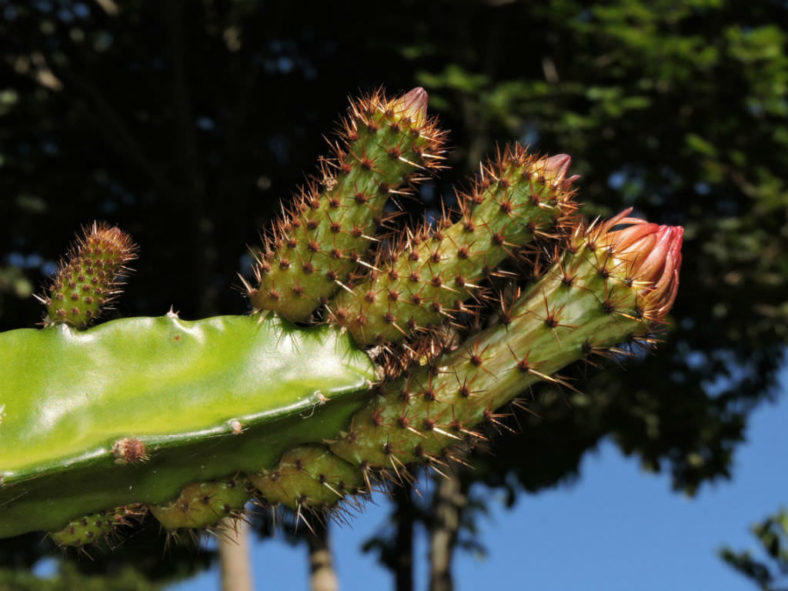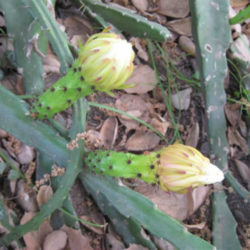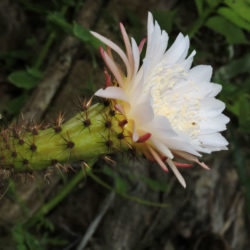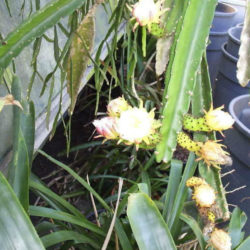Scientific Name
Weberocereus tonduzii (F.A.C. Weber) G.D. Rowley
Common Name(s)
Ballerina Flower
Synonym(s)
Cereus tonduzii, Selenicereus tonduzii, Werckleocereus tonduzii
Scientific Classification
Family: Cactaceae
Subfamily: Cactoideae
Tribe: Hylocereeae
Genus: Weberocereus
Description
Weberocereus tonduzii, also known as Selenicereus tonduzii, is a well-branched cactus with climbing or trailing stems with 2 or 3 angles occasionally toothed or lobed and with small woolly areoles bearing up to 2 small spines. The stems are grayish-green, often with aerial roots. They grow up to 13 feet (4 m) long and 2 inches (5 cm) in diameter.
The nocturnal flowers are spiny but not hairy, yellow to white, with brownish-pink outer petals. They are up to 3 inches (7.5 cm) long and 2 inches (5 cm) in diameter.
Origin
Weberocereus tonduzii is native to Costa Rica. It grows as an epiphyte on the western slopes of Cordillera de Talamanca.

Hardiness
USDA hardiness zone 10b to 11b: from 35 °F (+1.7 °C) to 45 °F (+7.2 °C).
How to Grow and Care
Like most cacti, Cereus are fairly low-maintenance and hardy. Make sure they receive enough water without becoming waterlogged, especially during the summer, and fertilize them for best results. If the roots have become black or overly soft, the cactus could be experiencing root rot – cut away the affected parts and replant. Like all cacti, give them lots of direct sunlight, especially during the summer. Well-drained soil is best, and most Cereus cacti perform well in soil with some organic material. Some recommend avoiding soil that contains sphagnum moss, though – it can make the cactus vulnerable to root rot.
It may become necessary to repot your Cereus if it outgrows its container. If so, make sure the soil is dry and then remove the pot. Next, knock away old soil, prune away any rotted or dead roots, and replace it in a new pot and backfill it with new soil. Ensure not to overwater cacti planted in new pots, as this can lead to root rot – it should be left dry for about a week and then watered lightly.
See more at How to Grow and Care for Cereus.
Links
- Back to genus Weberocereus
- Succupedia: Browse succulents by Scientific Name, Common Name, Genus, Family, USDA Hardiness Zone, Origin, or cacti by Genus
Photo Gallery
Click on a photo to see a larger version.


